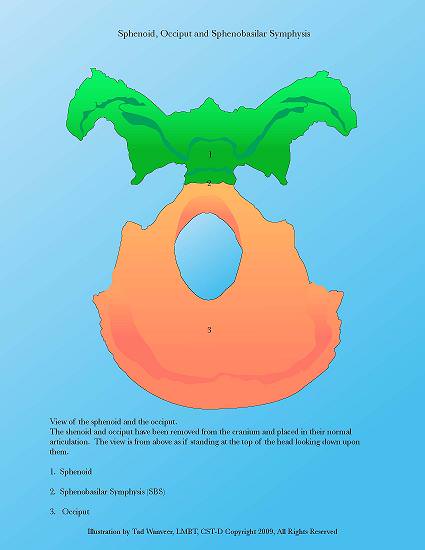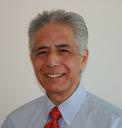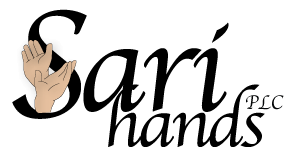Articles
The following are articles that Sari’s written for M Fitness Magazine as a contributing writer.*
Fascia
Stillness
Neck Pain
Sari has also published some articles with Ezine Articles.
Expert Author with Ezine Articles
6 Points of Posture for Sitting
Phased Approach to Golf Conditioning
Please let me know if you have topic ideas for future articles/newsletters
This is an interesting article from the New York Times about the "Language of Touch".
Fascia
Stillness
Neck Pain
Sari has also published some articles with Ezine Articles.
Expert Author with Ezine Articles
6 Points of Posture for Sitting
Phased Approach to Golf Conditioning
Please let me know if you have topic ideas for future articles/newsletters
This is an interesting article from the New York Times about the "Language of Touch".
Here is an interesting article written for the January 2010 Massage Magazine:
Written and illustrated by Tad Wanveer, L.M.B.T., C.S.T.-D.

Viola Frymann, D.O., F.A.A.O., performed a study of 1,250 infants and found 88.4 percent had one or more sphenobasilar symphysis (SBS) strain patterns.1
Mark Sandhouse, D.O., performed a study with 142 adults, and he found 100 percent had at least one SBS strain pattern and 92 percent had a combination of strain patterns.2
The creator of cranial osteopathy, William Sutherland, D.O., felt that sphenoid movement, in particular at the SBS, was central to the motion of the entire craniosacral mechanism.3
He developed a series of specific motion-assessment and corrective-treatment steps to address restrictions of the SBS. These are called Sutherland sphenobasilar lesion patterns.
SBS restrictive patterns directly or indirectly affect the shape and motion of the cranium, intracranial membrane system and sutures.4
A few results of restrictions are listed below.
The pituitary gland, the master endocrine system gland, is situated within the body of the sphenoid. Stress in the area of the sphenoid can disrupt pituitary function or congest the flow of pituitary hormones traveling into the body’s general circulation. Atypical growth, aching muscles or weight gain are some of the conditions that can arise.
The hypothalamus, which is connected to the pituitary gland, constantly monitors the body’s physiological processes in order to maintain an optimal internal state called homeostasis. Sphenoid stress can travel to the hypothalamus causing disturbances in the way the hypothalamus receives, uses or sends nerve or fluid (neurological or vascular) information. Agitation, tiredness or high blood pressure are a few conditions that can arise.
CSF is produced in the ventricular system. The ventricular system is located within the brain and is comprised of four cavities (ventricles) and their interconnecting channels. CSF is produced in each ventricle, and then flows within the ventricles and channels to ultimately surround and enter the brain and spinal cord tissue. Postmortem exam has shown that SBS strain patterns can cause twists, kinks and obstruction of the ventricular system channels. In some cases, the obstruction seemed enough to cause abnormal accumulation of CSF within the ventricles (hydrocephalus).5 Impaired CSF flow can generate conditions like severe headache, neurological injury or lethargy.
Nerves and vessels traveling into and out of the cranium pass through openings called foramina. These openings are within individual cranial bones and are formed by the articulation of bones. Sphenoid stress can deform openings within the sphenoid itself as well as cause deformation of openings throughout the entire cranium. This shape distortion can squash, pull, twist or bend nerves and vessels passing through the openings. In addition, the entire inner surface of all the cranial bones is coated with membrane. This same membrane covers all the nerves and vessels traveling through the openings. Stress of the membrane can deform openings and distort nerve or vessel shape. Chronic bowel irritation, chaotic eye motion or difficulty speaking are a few conditions that may arise.
The membrane lining the inner surface of all cranial bones and the membrane sheets situated within the brain tissue are part of the craniosacral system. Sphenoid motion restrictions or malposition can change the normal shape or movement of the membrane, thus compromising the entire craniosacral system. Stress and strain upon nerves or vessels can occur, leading to problems like dizziness, cranial bone deformation (plagiocephaly) or attention deficit hyperactivity disorder.
In my experience, SBS restrictions are common and occasionally can cause the entire craniosacral system to lock down upon itself, thus distorting not only the entire head and face but the body, too. Most SBS strains are less disruptive, yet even a minute disturbance in position or motion of the SBS can cause havoc in any number of brain or body systems. When we help our clients release restrictions of their SBS, then their craniosacral system, their central nervous system and their body as whole can be less burdened by neurological or vascular distress. As a result their tissues, fluids and cellular processes that had been previously hampered, can regain the freedom that is essential in order to work optimally, correct dysfunction, decrease or eliminate symptoms and improve overall health and well-being.
In my experience, SBS restrictions are common and occasionally can cause the entire craniosacral system to lock down upon itself, thus distorting not only the entire head and face but the body, too. Most SBS strains are less disruptive, yet even a minute disturbance in position or motion of the SBS can cause havoc in any number of brain or body systems. When we help our clients release restrictions of their SBS, then their craniosacral system, their central nervous system and their body as whole can be less burdened by neurological or vascular distress. As a result their tissues, fluids and cellular processes that had been previously hampered, can regain the freedom that is essential in order to work optimally, correct dysfunction, decrease or eliminate symptoms and improve overall health and well-being.
1. Frymann, D.O., F.A.A.O., "Relation of Disturbances of Craniosacral Mechanism to Symptomatology of The Newborn: Study Of 1,250 Infants," The Journal of the American Osteopathic Association, 65:1059-1075, 1966.
2. Sandhouse, M., D.O., and Timoshkin, E.M., O.M.S. IV, "Retrospective Study of Cranial Strain Pattern Prevalence in a Healthy Population," The Journal of the American Osteopathic Association, Volume 108, No.11, November 2008.
3. Sutherland, W.G., D.O., Teachings In The Science Of Osteopathy, Rudra Press, Sutherland Cranial Teaching Foundation Inc., 1990.
4. Magoun, H.I., Sr., A.B., D.O., F.A.A.O., Osteopathy in the Cranial Field, Third Edition, The Journal Printing Company, Kirksville, Missouri, 1976.
5. Ibid.
2. Sandhouse, M., D.O., and Timoshkin, E.M., O.M.S. IV, "Retrospective Study of Cranial Strain Pattern Prevalence in a Healthy Population," The Journal of the American Osteopathic Association, Volume 108, No.11, November 2008.
3. Sutherland, W.G., D.O., Teachings In The Science Of Osteopathy, Rudra Press, Sutherland Cranial Teaching Foundation Inc., 1990.
4. Magoun, H.I., Sr., A.B., D.O., F.A.A.O., Osteopathy in the Cranial Field, Third Edition, The Journal Printing Company, Kirksville, Missouri, 1976.
5. Ibid.

© Sari Hands PLC
Sari Lewis • Phone 480–206-6592 • Email Sari
14362 N. Frank Lloyd Wright Blvd. • Suite 1000 • Scottsdale, AZ 85260
Sari Lewis • Phone 480–206-6592 • Email Sari
14362 N. Frank Lloyd Wright Blvd. • Suite 1000 • Scottsdale, AZ 85260
© web design by one eleven stockton, ca

